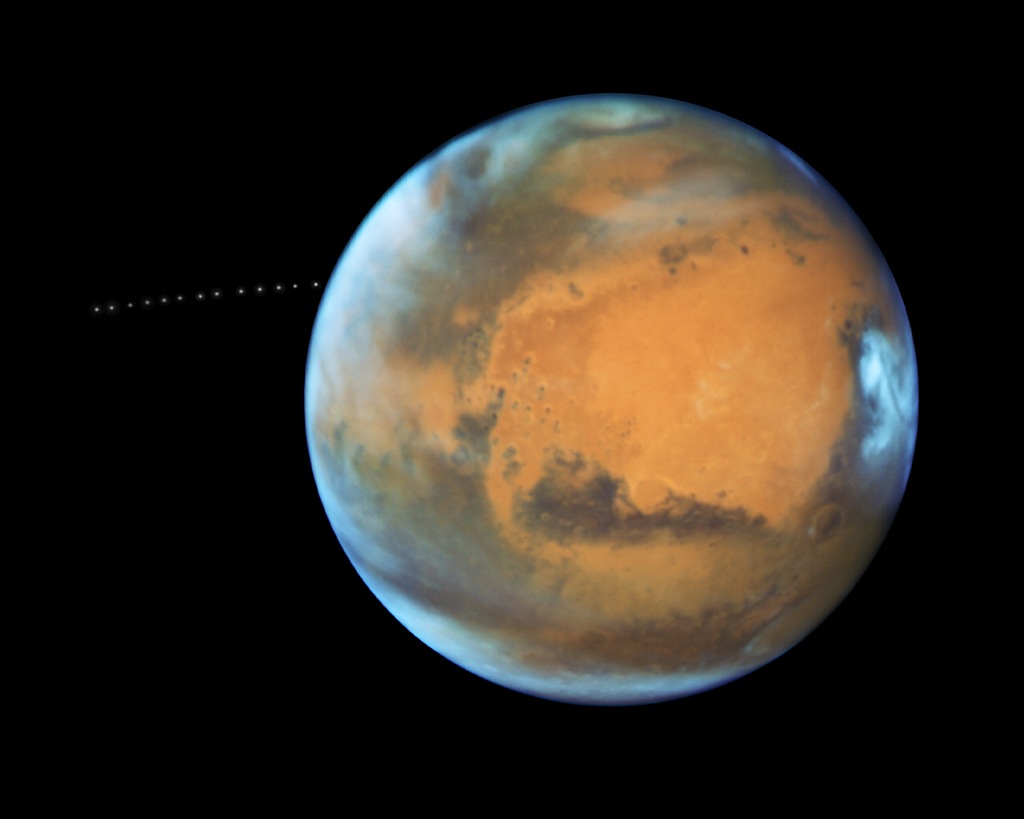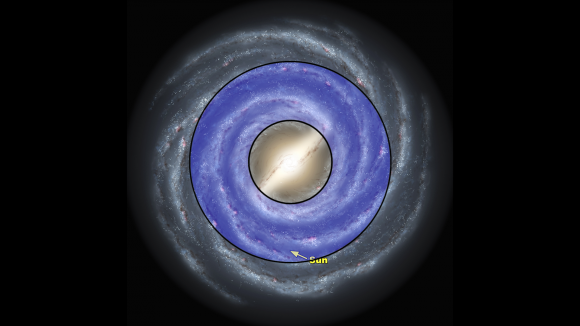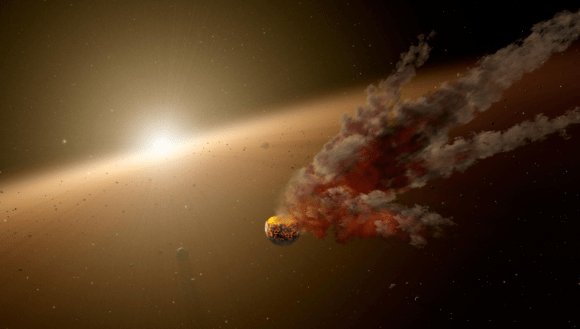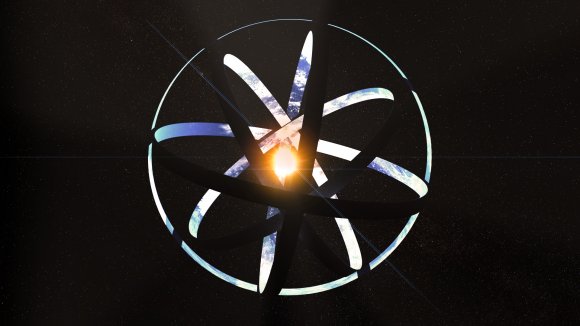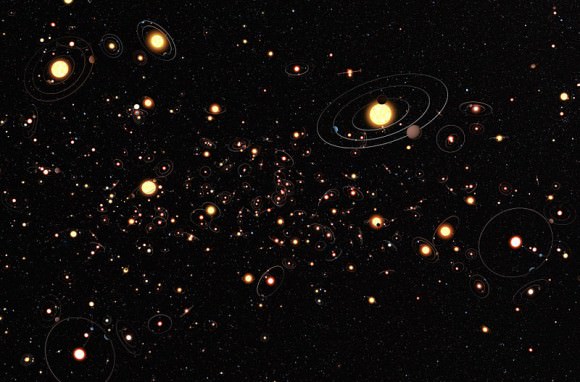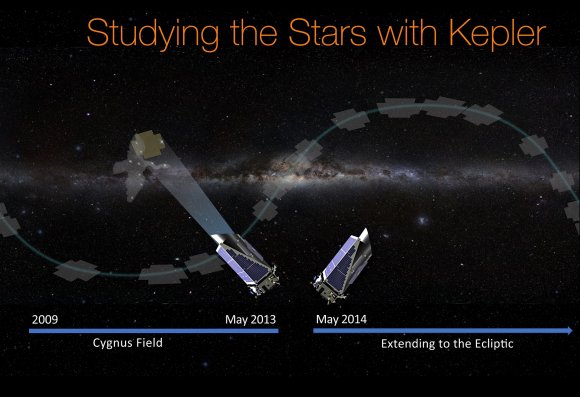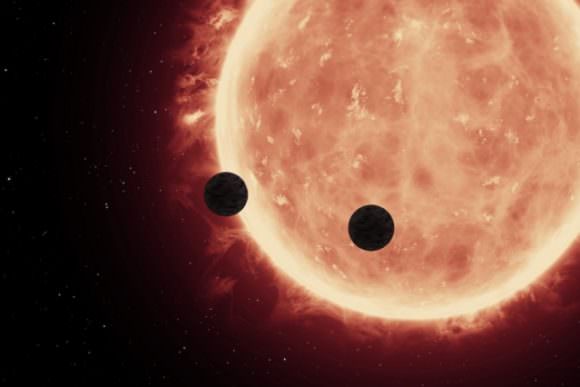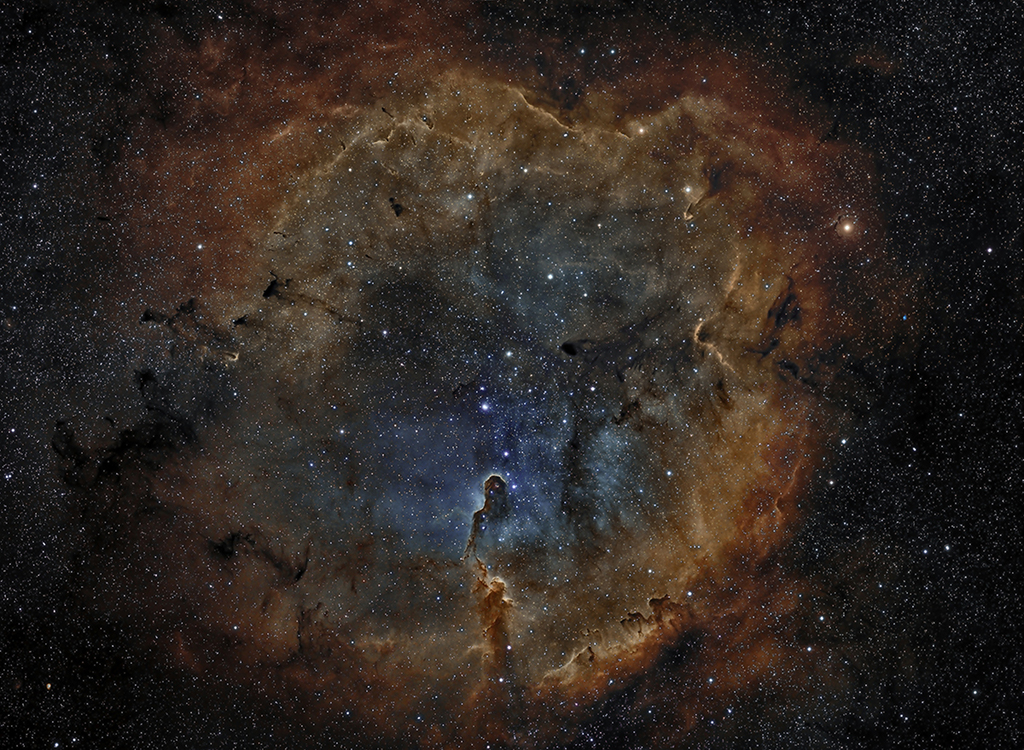
The signal that seemed to emanate from the red dwarf star Ross 128, as detected by the Arecibo Observatory in May 2017 (enclosed in the red frame).
Credit: PHL @ UPR AreciboA strange radio signal that seemed to emanate from a small nearby star probably came from Earth-orbiting satellites, astronomers say.
Late last week, researchers announced that, on May 12, the 1,000-foot-wide (305 meters) Arecibo radio telescope in Puerto Rico detected a bizarre radio signal in the vicinity of Ross 128, a red dwarf star that lies just 11 light-years from Earth.
The signal was theoretically consistent with a transmission from an alien civilization, the astronomers said, though they stressed that hypothesis was "at the bottom of many other explanations." Indeed, they pegged the leading candidates as flares from Ross 128, emissions from some other object in the same field of view as the star, and a burst from one or more high-orbiting satellites. [13 Ways to Hunt Intelligent Aliens]
Now, follow-up observations — by Arecibo, as well as the Green Bank Telescope in West Virginia and the Allen Telescope Array (ATA) in northern California — point to this last hypothesis as the most likely, team members said.
"The best explanation is that the signals are transmissions from one or more geostationary satellites," Abel Mendez, director of the Planetary Habitability Laboratory at the University of Puerto Rico, wrote in a statement today (July 21). (Geostationary satellites circle Earth at an altitude of about 22,300 miles, or 35,800 kilometers.)
"This explains why the signals were within the satellite’s frequencies and only appeared and persisted in Ross 128; the star is close to the celestial equator, where many geostationary satellites are placed," Mendez added. "This fact, though, does not yet explain the strong dispersion-like features of the signals (diagonal lines in the figure); however, it is possible that multiple reflections caused these distortions, but we will need more time to explore this and other possibilities."
But even though it's likely that the Ross 128 signal has a prosaic explanation, scientists should still follow up on similar detections in the future, stressed Seth Shostak, a senior astronomer at the SETI (Search for Extraterrestrial Intelligence) Institute in Mountain View, California.
"The historic lesson is clear — these things pop up, and you have to follow them up, because you never know what's going to be the real one, or even if there will ever be a real one," Shostak, who was involved in the recent ATA observations of Ross 128, told Space.com earlier this week. "Following up is mandatory."
Follow Mike Wall on Twitter @michaeldwall and Google+. Follow us @Spacedotcom, Facebook or Google+. Originally published on Space.com.
Late last week, researchers announced that, on May 12, the 1,000-foot-wide (305 meters) Arecibo radio telescope in Puerto Rico detected a bizarre radio signal in the vicinity of Ross 128, a red dwarf star that lies just 11 light-years from Earth.
The signal was theoretically consistent with a transmission from an alien civilization, the astronomers said, though they stressed that hypothesis was "at the bottom of many other explanations." Indeed, they pegged the leading candidates as flares from Ross 128, emissions from some other object in the same field of view as the star, and a burst from one or more high-orbiting satellites. [13 Ways to Hunt Intelligent Aliens]
Now, follow-up observations — by Arecibo, as well as the Green Bank Telescope in West Virginia and the Allen Telescope Array (ATA) in northern California — point to this last hypothesis as the most likely, team members said.
"The best explanation is that the signals are transmissions from one or more geostationary satellites," Abel Mendez, director of the Planetary Habitability Laboratory at the University of Puerto Rico, wrote in a statement today (July 21). (Geostationary satellites circle Earth at an altitude of about 22,300 miles, or 35,800 kilometers.)
"This explains why the signals were within the satellite’s frequencies and only appeared and persisted in Ross 128; the star is close to the celestial equator, where many geostationary satellites are placed," Mendez added. "This fact, though, does not yet explain the strong dispersion-like features of the signals (diagonal lines in the figure); however, it is possible that multiple reflections caused these distortions, but we will need more time to explore this and other possibilities."
But even though it's likely that the Ross 128 signal has a prosaic explanation, scientists should still follow up on similar detections in the future, stressed Seth Shostak, a senior astronomer at the SETI (Search for Extraterrestrial Intelligence) Institute in Mountain View, California.
"The historic lesson is clear — these things pop up, and you have to follow them up, because you never know what's going to be the real one, or even if there will ever be a real one," Shostak, who was involved in the recent ATA observations of Ross 128, told Space.com earlier this week. "Following up is mandatory."
Follow Mike Wall on Twitter @michaeldwall and Google+. Follow us @Spacedotcom, Facebook or Google+. Originally published on Space.com.





